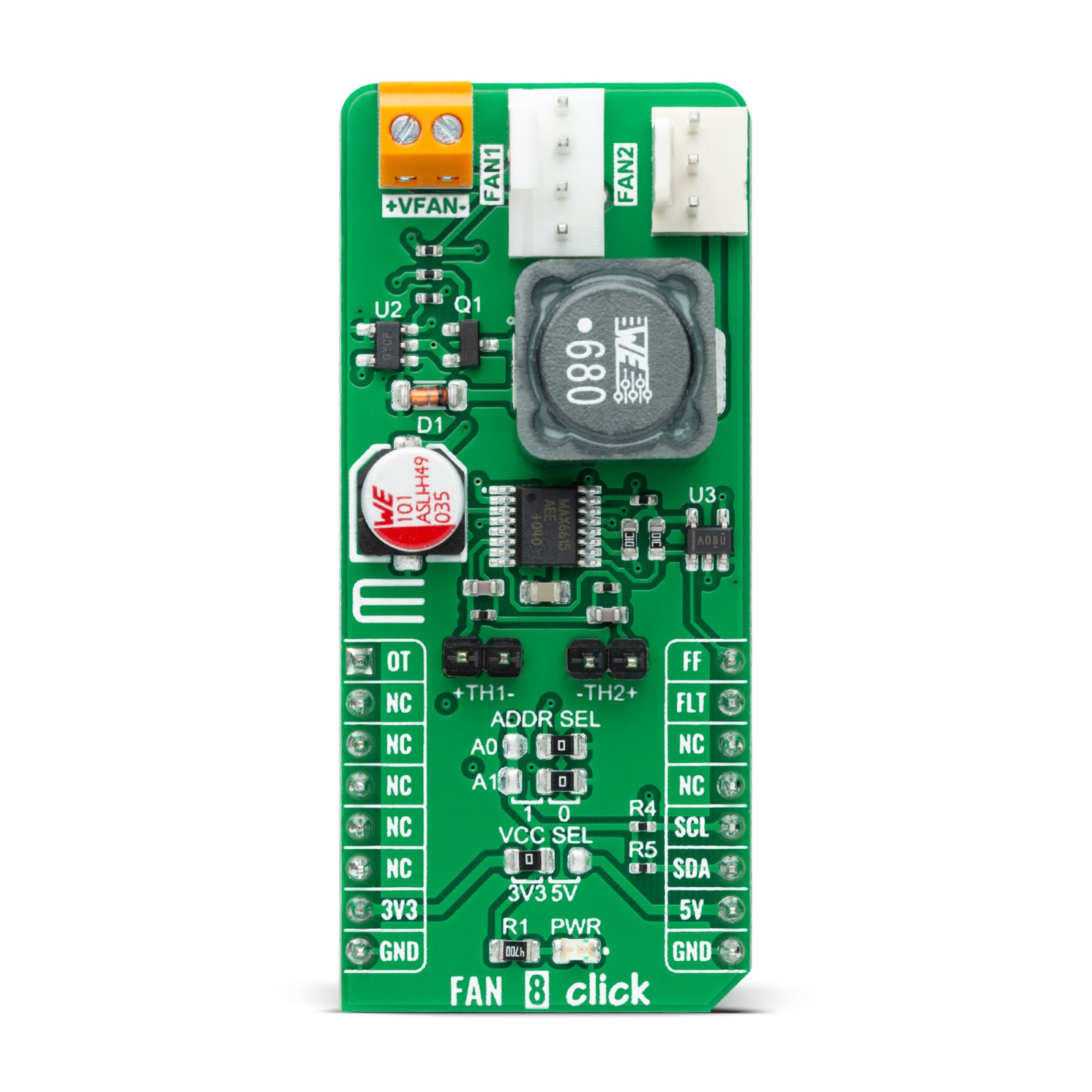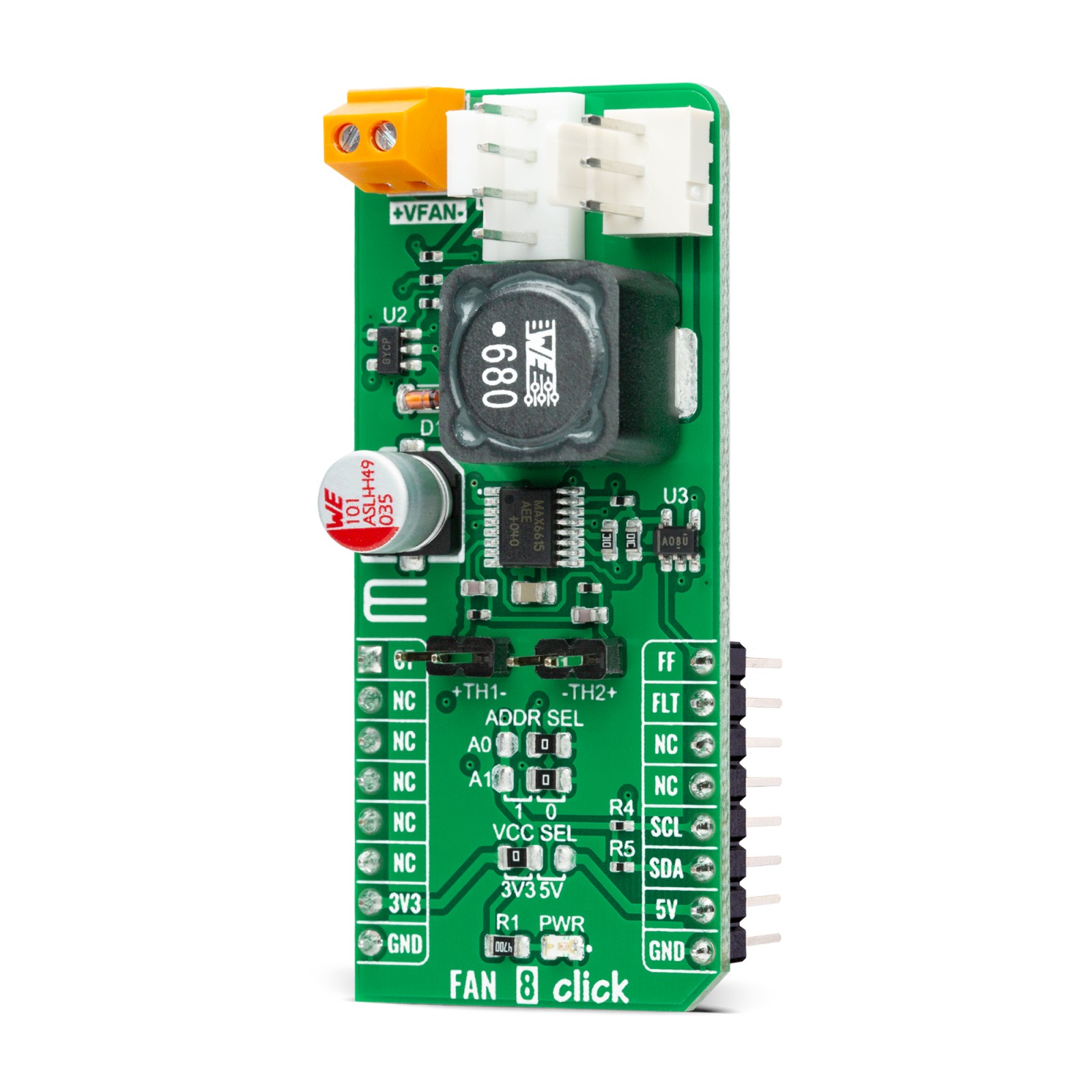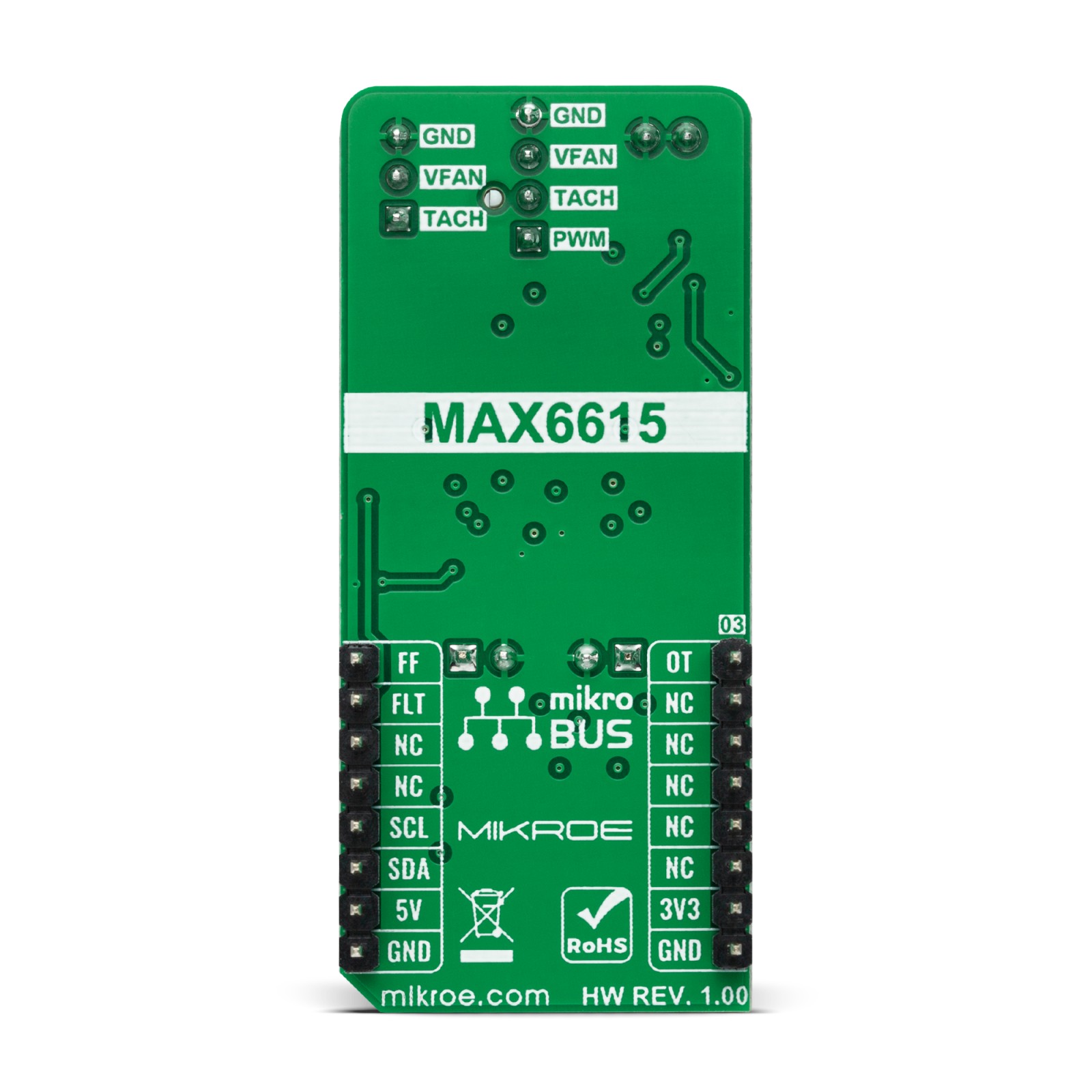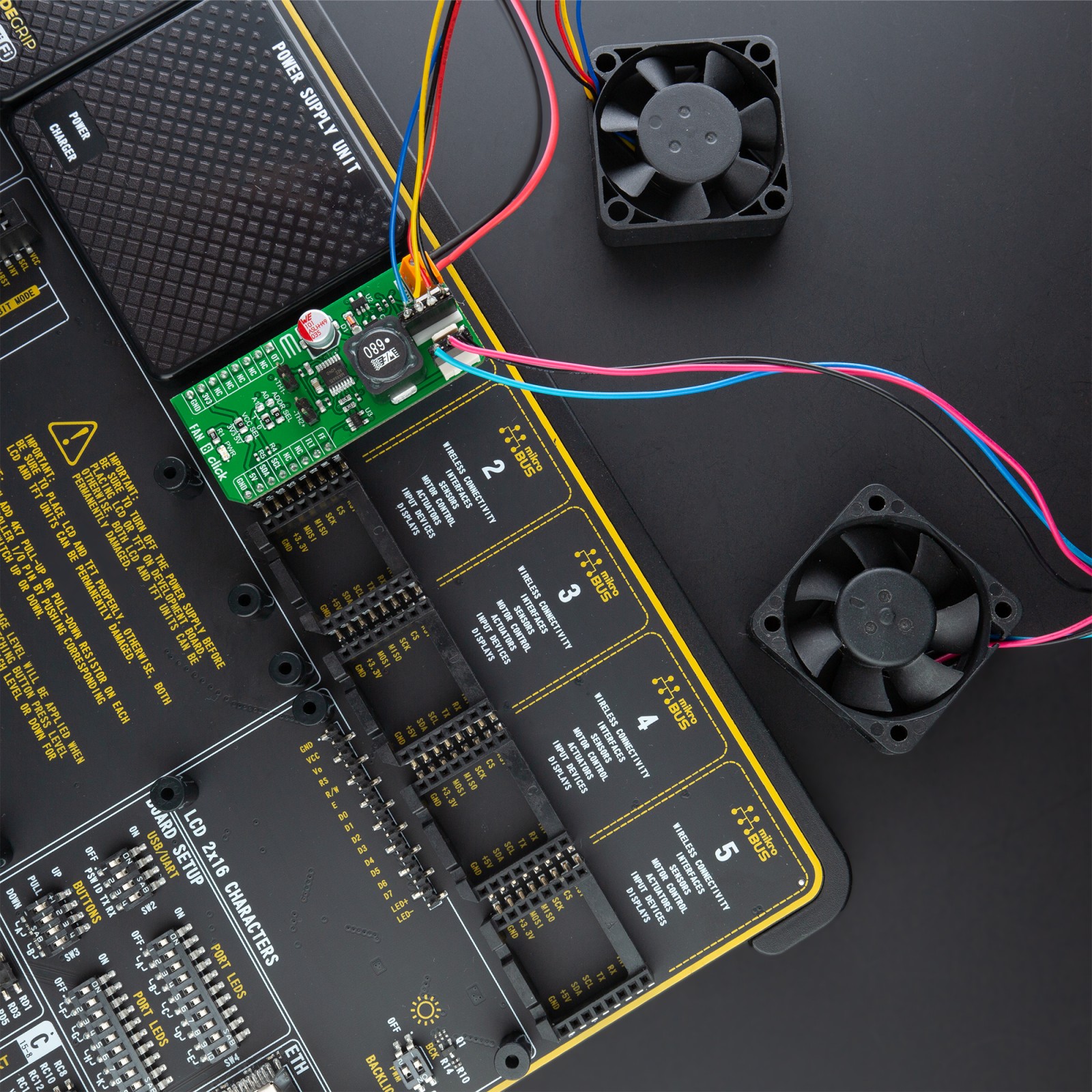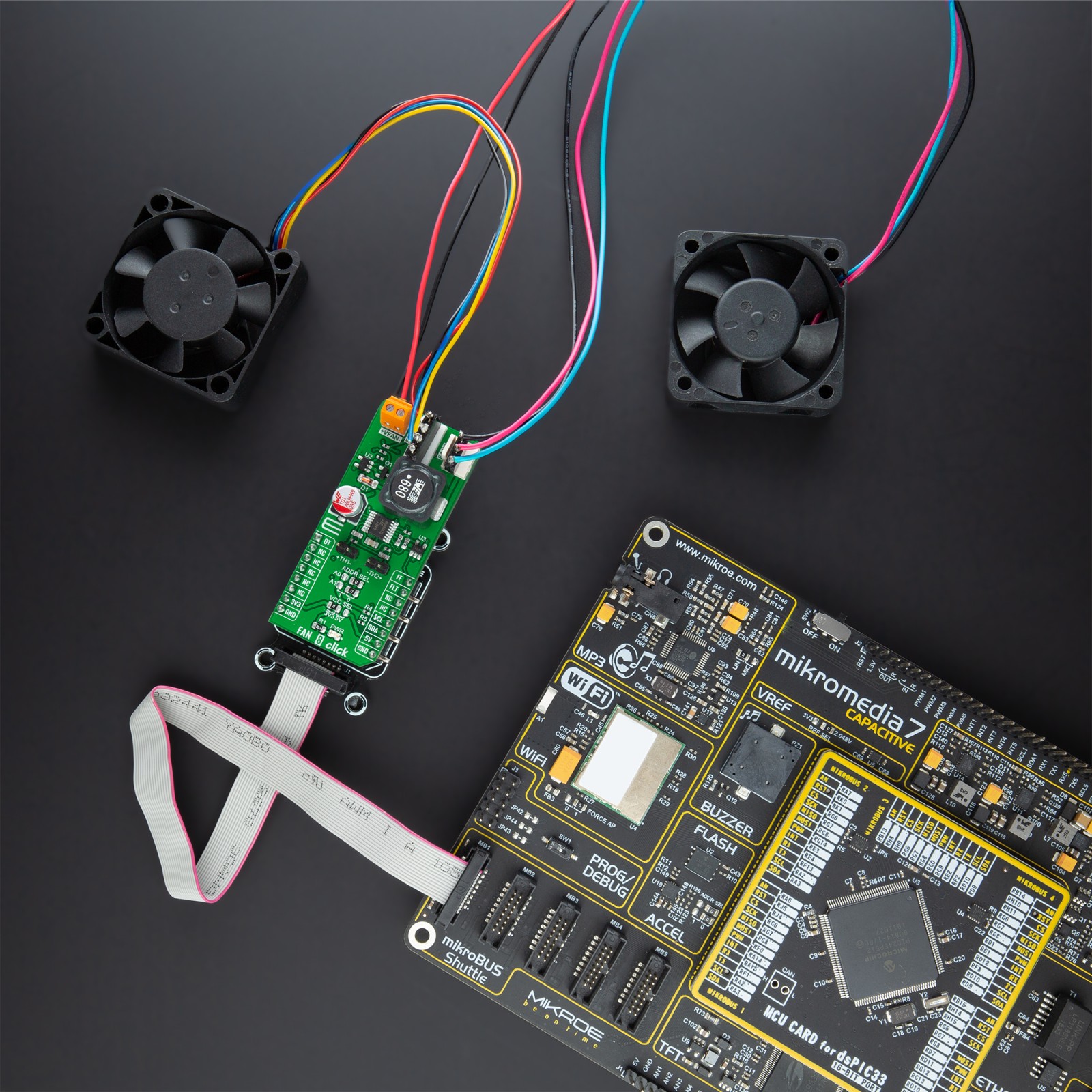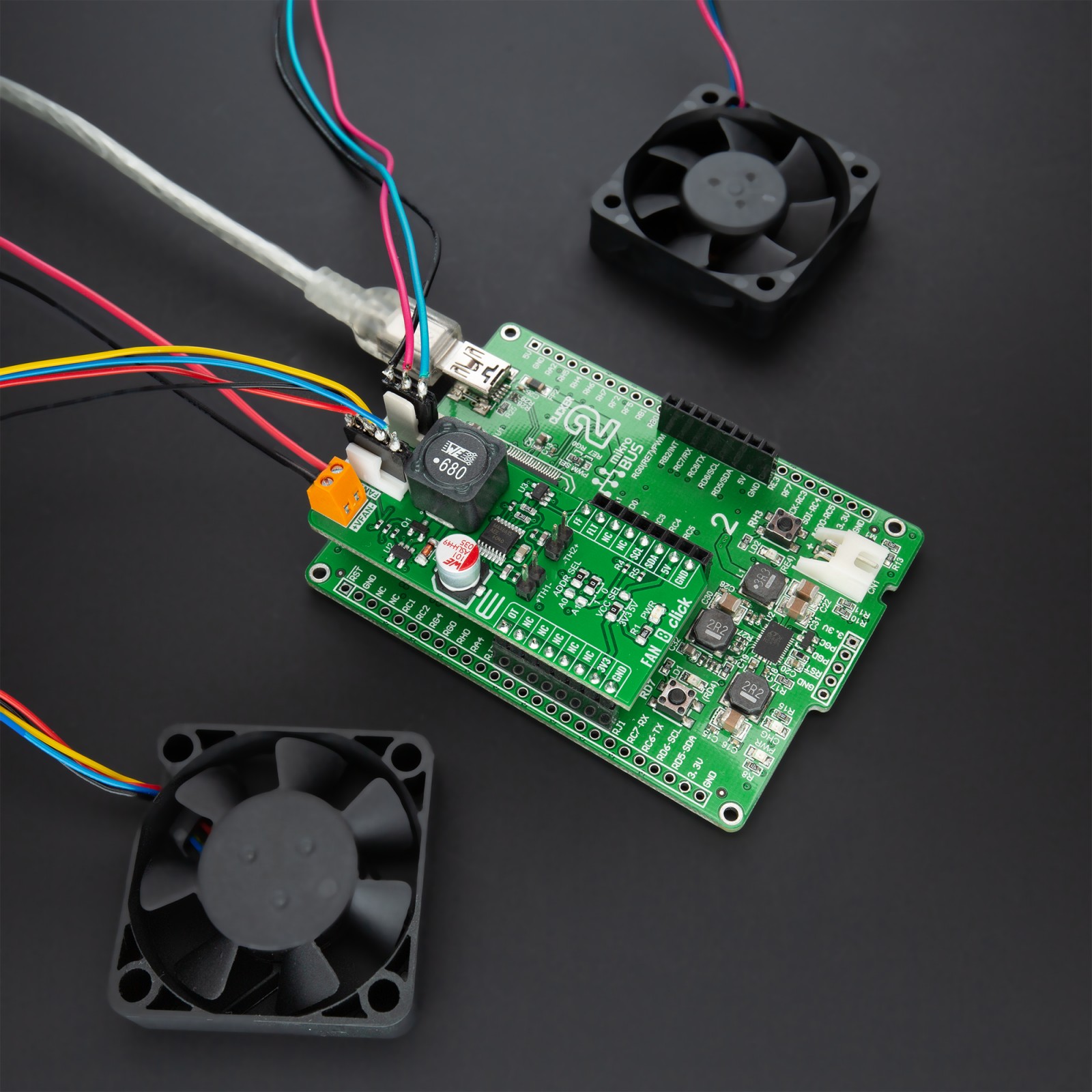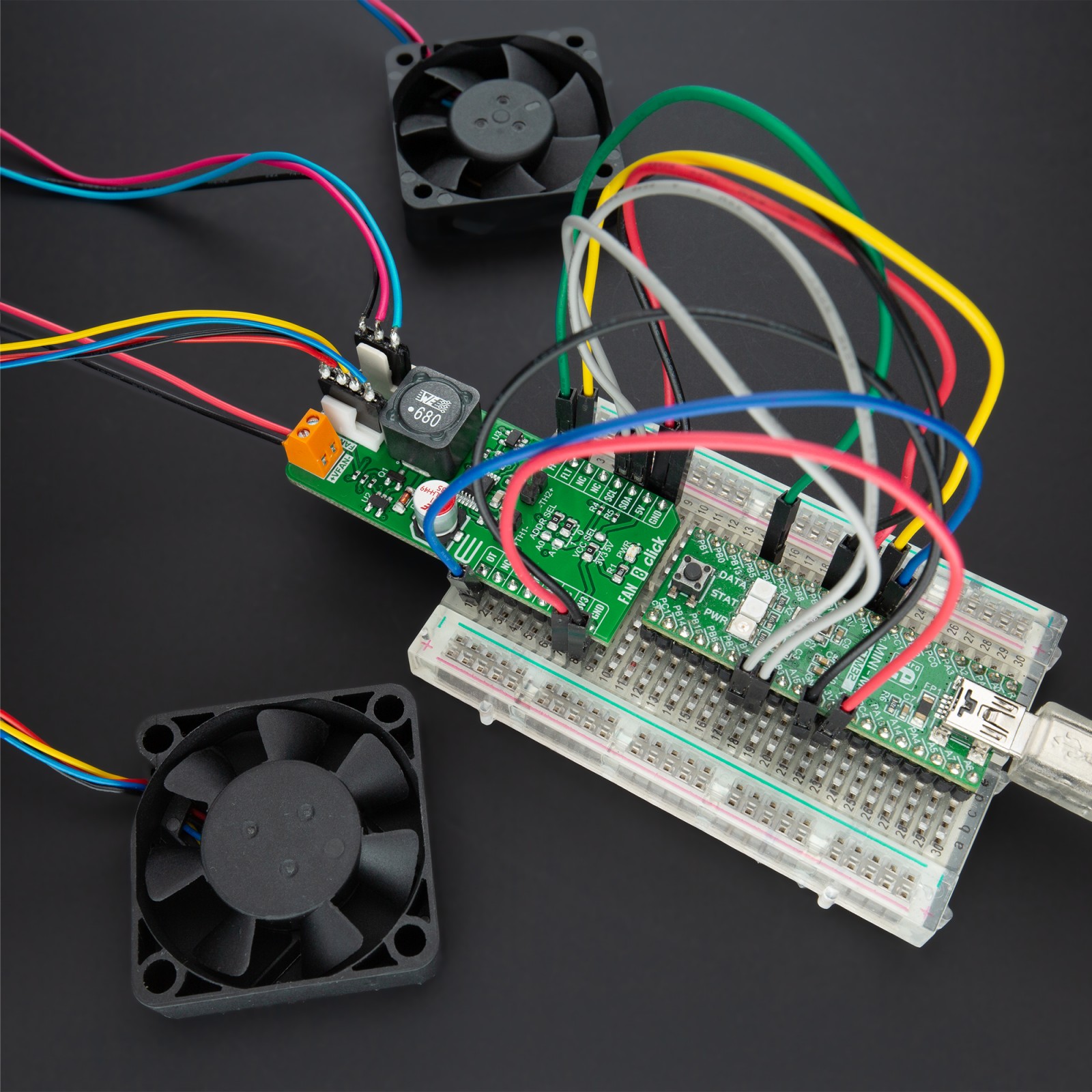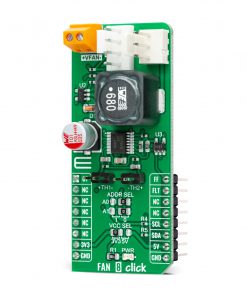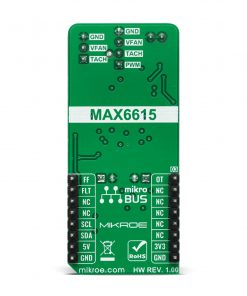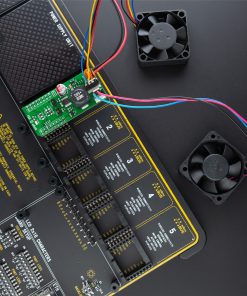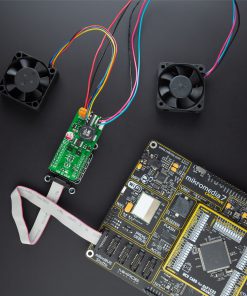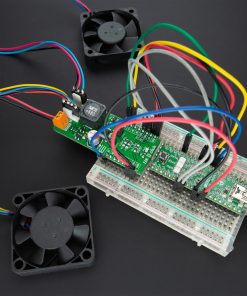Subtotal: R2,585.00
Fan 8 Click
R595.00 ex. VAT
Fan 8 Click is a compact add-on board that represents a compliant fan controller. This board features the MAX6615, a fan-speed controller, and a dual-channel temperature monitor with external thermistor inputs from Analog Devices. The MAX6615 controls the speed of two cooling fans based on the temperatures of external thermistors and the device’s internal temperature, reporting temperature values in a digital form using the I2C serial interface. The temperature data controls a PWM output signal to adjust the speed of a cooling fan, minimizing noise when the system is running cool, but providing maximum cooling when power dissipation increases. It also features an overtemperature alarm to generate interrupts, throttle, or shutdown signals. The combination of high accuracy and dual thermistor inputs makes this Click board a practical choice for networking equipment, servers, or other applications requiring cooling and temperature control.
Fan 8 Click is supported by a mikroSDK compliant library, which includes functions that simplify software development. This Click board™ comes as a fully tested product, ready to be used on a system equipped with the mikroBUS™ socket.
Stock: Lead-time applicable.
| 5+ | R565.25 |
| 10+ | R535.50 |
| 15+ | R505.75 |
| 20+ | R486.71 |

 WiFi Plus Click
WiFi Plus Click 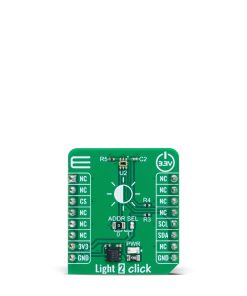 Light 2 Click
Light 2 Click 